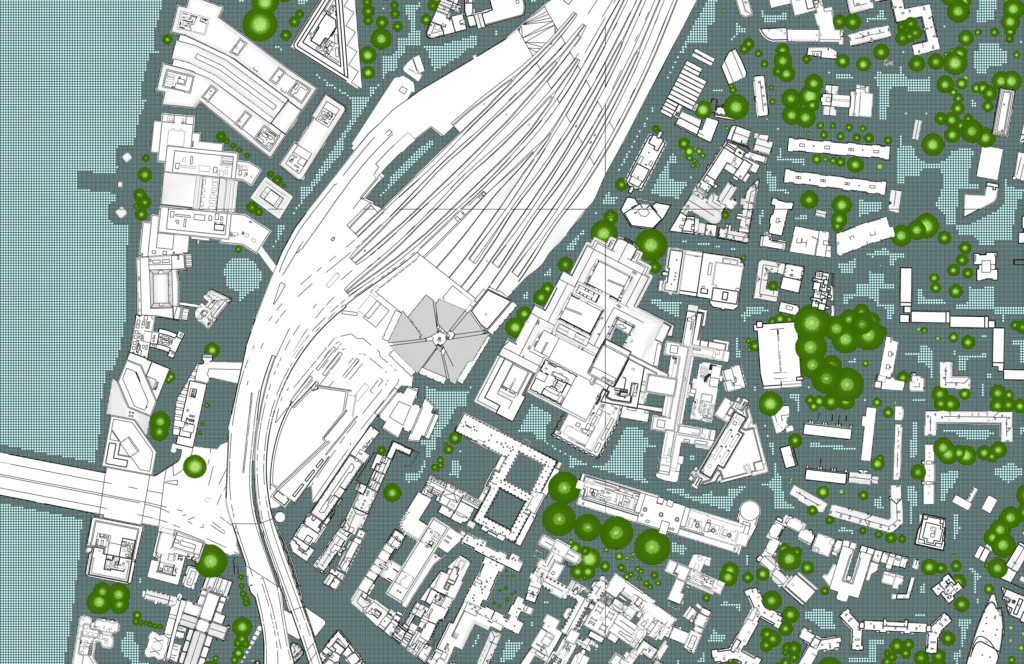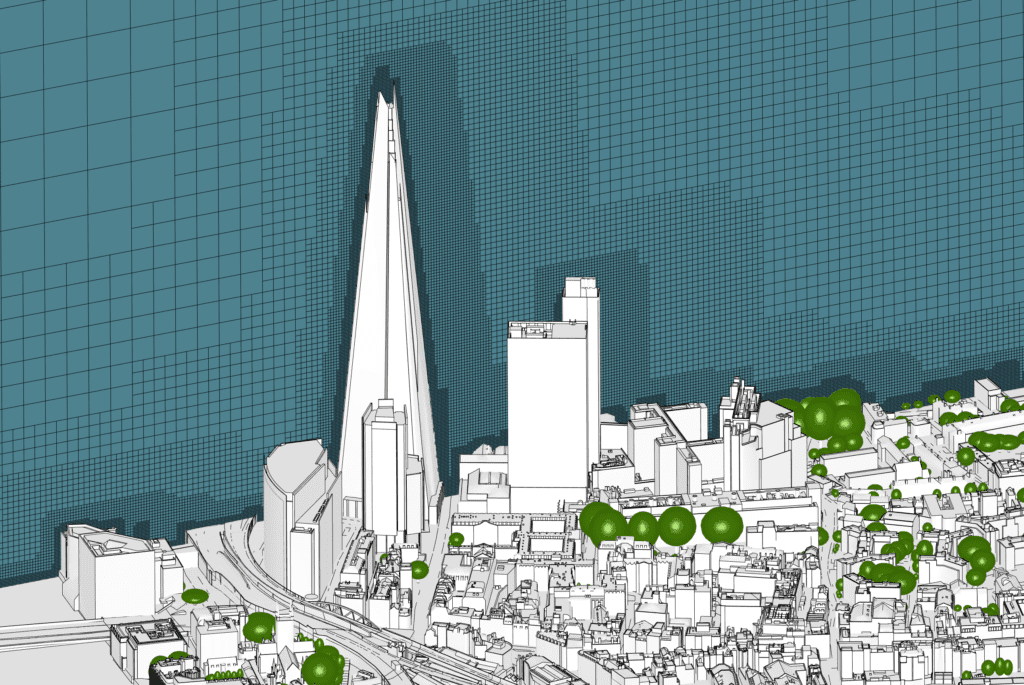Documentation
While simulating a Pedestrian Wind Comfort (PWC) analysis, mesh resolution is of prime importance. There are certain requirements that need to be taken care of while performing CFD simulations to get high-quality and reliable results that resolve the flow features accurately. These requirements ensure that the modeling approaches do not vary drastically, and stay within defined parameters.
Similarly, when it comes to simulating a building or a region within London to assess the wind comfort, there are certain meshing guidelines that should be followed. These guidelines are standard and are referred to as the City of London Guidelines.
Note
SimScale uses Pacefish®\(^2\) solver to assess wind comfort in a PWC analysis. The mesh generated is a cartesian mesh, where cells are formed as cubes.
The City of London Guidelines are discussed below:
Important
To comply with the City of London guidelines, CAD models used should include all buildings that are within 400 \(m\) from the centre of the proposed site.
Taller buildings outside of this region need to be included if they fall upstream of the wind direction and can impact the flow patterns.
Figures 1 and 2 show the cartesian mesh generated, around ‘The Shard, London’ in SimScale complying with the City of London guidelines. CAD geometry credits to Accucities \(^3\).


In order to have the most efficient setup complying with the guidelines, it is advised to use the following settings:
More details on how to access the mesh and control its settings in PWC analysis can be found here.
City Lawson Criteria ( called “London LDDC Comfort” in SimScale), which is a modified version of the Lawson LDDC criteria, is accepted as a comfort criteria. The criteria is summarized in the following table:
| Category | Mean and GEM wind speed (5% exceedance) \(m/s\) | Description |
| Frequent Sitting | 2.5 | Acceptable for frequent outdoor sitting use, e.g. restaurant, café. |
| Occasional Sitting | 4 | Acceptable for occasional outdoor seating, e.g. general public outdoor spaces, balconies and terraces intended for occasional use, etc. |
| Standing | 6 | Acceptable for entrances, bus stops, covered walkways or passageways beneath buildings. |
| Walking | 8 | Acceptable for external pavements, walkways. |
| Uncomfortable | >8 | Not comfortable for regular pedestrian access. |
The table above can be explained with the following example: If the mean and GEM wind speed over 8 \(m/s\) achieves 5% exceedance, then it is categorized as Uncomfortable. Here, GEM stands for Gust Equivalent Mean. This value is obtained by dividing the peak gust wind speed by 1.85.
Understanding seasonal difference with CoL guidelines
If understanding the seasonal difference is of interest then one should run a wind study with 36 wind directions. That’s when the seasonal differences start to be seen clearly. This is because the seasonal wind data differences also get smoothened via the merging of wind directions, such that the difference in the wind rose for each season is much less on 8 or 16 than on 36 directions. Read more on our Forum.
The safety criteria has a single rule: If the Mean and GEM wind speed from any wind direction is greater than or equal to 15 \(m/s\) and it achieves 0.022% exceedance, then consider it as Dangerous.
References
Last updated: March 28th, 2023
We appreciate and value your feedback.
Sign up for SimScale
and start simulating now